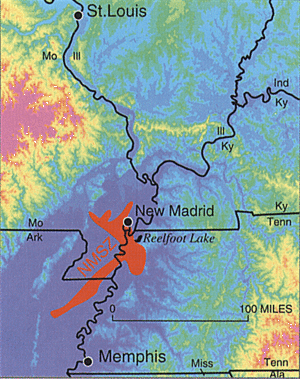Active fault facts for kids
An active fault is a crack in the Earth's crust that is likely to cause another earthquake in the future. Think of it like a scar on the Earth's surface where rocks have moved past each other. Scientists call a fault "active" if there's been clear movement or signs of earthquakes along it within the last 10,000 years. Active faults are a natural geologic hazard because they are the main cause of earthquakes.

Contents
What is a Fault?
The Earth's outer layer, called the crust, is not one solid piece. It's broken into huge sections called tectonic plates. These plates are always moving, but very slowly. A fault is a break or crack in the Earth's crust where these plates or blocks of rock slide past each other.
How Do Faults Become Active?
When tectonic plates move, they can get stuck against each other. Pressure builds up over time. When this pressure becomes too much, the rocks suddenly slip along a fault line. This sudden movement is what causes an earthquake. If a fault has slipped recently, or shows signs it could slip again, it's called an active fault.
Why Are Active Faults Important?
Knowing where active faults are helps us understand where future earthquakes might happen. Scientists study these faults to learn about the risk of earthquakes in different areas. This information helps engineers build stronger buildings. It also helps communities prepare for possible shaking.
Famous Active Faults
One of the most famous active faults in the world is the San Andreas Fault in California, USA. It's a very long fault where the Pacific Plate and the North American Plate slide past each other. This fault causes many earthquakes in California. Another important active fault system is the New Madrid Seismic Zone in the central United States. This zone caused a series of very powerful earthquakes in 1811 and 1812.
How Scientists Study Active Faults
Scientists use many tools to study active faults. They look for signs of past earthquakes, like cracks in the ground or changes in the landscape. They also use special equipment to measure tiny movements of the Earth's crust. Seismographs are instruments that record ground shaking. These tools help them track how often faults move and how big the earthquakes might be.
Images for kids
-
The San Andreas Fault as seen from above.
See also
 In Spanish: Falla activa para niños
In Spanish: Falla activa para niños



